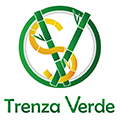It’s becoming crystal clear that the old “take, make, toss” routine just isn’t cutting it anymore when it comes to caring for our planet. Enter the Circular Economy—a game-changing mindset that squeezes every last drop of value from what we already have, keeps waste to an absolute minimum, and—bonus!—throws Mother Nature a much-needed lifeline.
Here’s where Latin America steps into the spotlight. Our region is bursting with life and resources: we hold more than a third of the world’s fresh water and half of its tropical forests, and we run on one of the cleanest energy mixes on Earth. Yet this same abundance sits side-by-side with a high vulnerability to climate change. To shield ourselves—and to hit the Paris Agreement targets—experts say we’ll need to invest somewhere between 7 % and 19 % of our annual GDP from now until 2030. Big numbers, sure, but stay with me.
Because there’s plenty of reason to feel upbeat. Right now, we recycle only a tiny slice of our urban waste. That low “starting line,” though, is actually a huge advantage: we can leapfrog straight to cutting-edge circular models and skip the missteps other economies already made. With smart innovation, well-crafted policies, and the right investment, Latin America can flip this challenge into a powerful engine for economic growth—one that lifts people up while giving the planet some much-deserved breathing room.
In Peru, a staggering 21,000 tons of waste pile up every single day—that’s enough to fill three soccer stadiums. Yet less than 2 percent ever finds its way back into the system. The rest? It seeps into our soil, rivers, and oceans. Faced with that grim picture, three friends from Lima decided to prove trash only exists when we fail to see it as raw material. That spark gave life to Sinba—short for “Sin Basura,” or “Without Trash”—back in 2015.
Sinba is a Peruvian social enterprise and Certified B Corporation on a mission to show that “garbage” disappears once materials flow in the right circles. Their big idea: collect 100 percent of the organic and inorganic leftovers from homes and businesses, transform them into fresh resources for agriculture—think balanced feed for pigs, nutrient-rich compost, or raw materials for new products—and track every single kilo so clients can see exactly how it re-enters Lima’s economy. Today, Sinba already serves more than 300 customers—from neighborhood cafés to giants like Starbucks—and families who separate their scraps at home. The target is bold but simple: pick up all waste streams and feed them back into the local loop.
The Cycle That Changes Everything
1. Education & Easy-to-Use Bins
Sinba trains people and hands out color-coded containers—green for organics, blue for recyclables, and gray for the rest.
2. Door-to-Door Collection
Their own crews swing by on optimized routes to pick up the sorted waste.
3. Transformation at the Bio-Factory & CIRC
Organics → turned into pig feed and compost.
Inorganics → become raw material for new bottles, cardboard, or metal goods.
Used cooking oil → heads off to become biodiesel.
4. Impact Report
Every client receives a monthly statement showing kilos recovered and CO₂ emissions avoided—total transparency, no guesswork.
Impact You Can Already Feel
| Indicator | Result |
|---|---|
| Organic waste recycled | 2,878 t |
| “Trash” reduction for clients | ≈ 90 % |
| Planned capacity for 2025 | 20 t/day |
| Projected 2025 sales | US $1.5 M |
Sinba’s story proves one thing loud and clear: when we flip our perspective, yesterday’s garbage becomes tomorrow’s opportunity—good for business, great for the planet.
Closing the Loop: Why It’s on All of Us
Latin America is blessed with lush rainforests, winding rivers, and an entrepreneurial spirit that never quits. Yet we’re also on the front lines of hurricanes, droughts, and other extreme climate events. That’s why betting on recycling and a circular economy isn’t just about saving the planet—it’s about protecting our own economic and social stability.
When we design products with a “second life” in mind, reuse materials instead of pulling new ones from the ground, and feed leftovers back into industry, we:
Get more mileage out of our resources: Less waste, more savings.
Shrink the trash headed to landfills—or worse, the ocean.
Safeguard the ecosystems that give us clean water, fresh air, and food.
All of this moves us closer to the UN’s Sustainable Development Goals and builds tougher, more flexible economies that can roll with the planet’s changes.
Your Part in the Story
Every choice matters: sorting your trash at home, picking brands that give materials a second chance, or supporting projects like Sinba that prove “garbage” can be pure opportunity. The circular future starts with one small decision you make today.
Your turn now: Tell us what inspired you in this article, and drop a comment with any other initiatives or companies—like Sinba—that are keeping the wheels of recycling and the circular economy turning in our region. We’d love to hear from you!
Credits:
Sitio oficial de Sinba (home) – información general de servicios, programas y rutas de recolección
https://sinba.pe/
Ficha de Sinba como Empresa B certificada – B Lab Global
https://www.bcorporation.net/en-us/find-a-b-corp/company/sinba/
Reportaje de El País: “La compañía peruana que transforma los residuos de las empresas con IA”
https://elpais.com/america-futura/2023-10-03/la-compania-peruana-que-transforma-los-residuos-de-las-empresas-con-inteligencia-artificial.html
Artículo en Economía Verde: “Sinba: Nada sobra”
https://economiaverde.pe/pymes/sinba-nada-sobra/
Historia en LinkedIn News: “Sinba, la empresa que demuestra que la economía circular es rentable”
https://www.linkedin.com/news/story/sinba-la-empresa-que-demuestra-que-la-econom%C3%ADa-circular-es-rentable-5794516/

